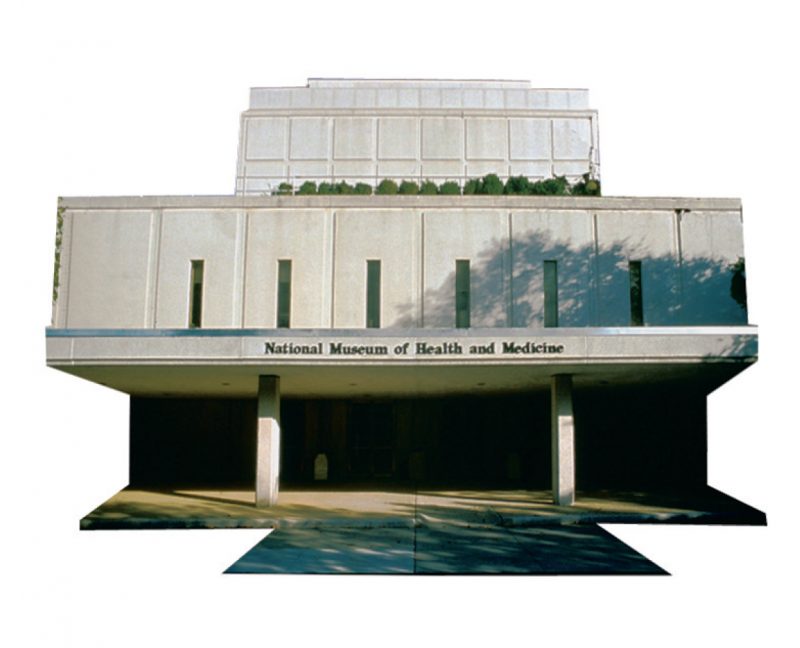A grave mood lies just beyond the fortified security gates that split the eight-foot wrought iron fence surrounding the Walter Reed Army Medical Center. Located in northwest Washington, D.C., Walter Reed is home to a hospital that is “the clinical center of gravity of American military medicine,” according to themselves, and to the National Museum of Health and Medicine, which was established during the Civil War to document, study, and improve medicine, with a particular focus on military medicine. The boxy, corporate-looking concrete compound looming off Georgia Avenue looks like any other 1960s or ’70s government building in the capital, and security checkpoints have become entirely ubiquitous around Washington—but it’s the hospital’s patients and residents walking around the campus on a warm spring day that first establish the somber milieu. They are young, often legless, armless, or otherwise seriously injured members of the Army, out to catch a breath of fresh air or to travel between the hospital’s several buildings. They are here, returned from a long military mission abroad, injured but still alive, hopefully on their way home. They are staying now in a hospital where America’s scientific and technological facilities are turned away from the enemy and the destruction of the battlefield, and toward their physical and mental recuperation.
In order to get to the museum itself, one must navigate curvy campus roads that pass in a loop around the front entrance to the main hospital building, where outpatients, often dressed in fatigues, come and go, as if to enforce upon the visitor a visual reminder of the raison d’être of the museum. The museum is on the back of the campus and is another, smaller gray concrete building that looks like an aged suburban elementary school. Parking is free and readily available, as is admission. Only a picture ID and an entry of a name and time into a logbook are required. Donations are accepted.
Through the front doors, the museum is dimly lit and mostly low-tech, reminiscent of the old installations at the Field Museum in Chicago, with yellowed placards describing exhibits in detached, scientific prose. Unlike, say, the new International Spy Museum across town the NMHM relies on the strength and impact of its content, as opposed to a slick, soulless presentation. The other patrons inside quickly diminish the serious tone first set outside: despite the fittingly hushed air, a troop of goofy, pubescent, khaki-clad Boy Scouts in town from Omaha for the National Scout Jamboree and several families with fascinated and energetic children make it feel like any ordinary science museum.
There seems to be little reason to the layout of the exhibits, except that the right side and center of the museum consist mainly of installations on military medicine, while the left side is primarily human physiology of both relatively normal and shockingly abnormal varieties; there is no obvious path through the scattered divisions and subdivisions of exhibits, which does not lead so much as allow one to drift. The highlights, though, are many and memorable: there is the crushed-can-looking bullet that killed...
You have reached your article limit
Sign up for a digital subscription and continue reading all new issues, plus our entire archives, for just $1.50/month.
Already a subscriber? Sign in





